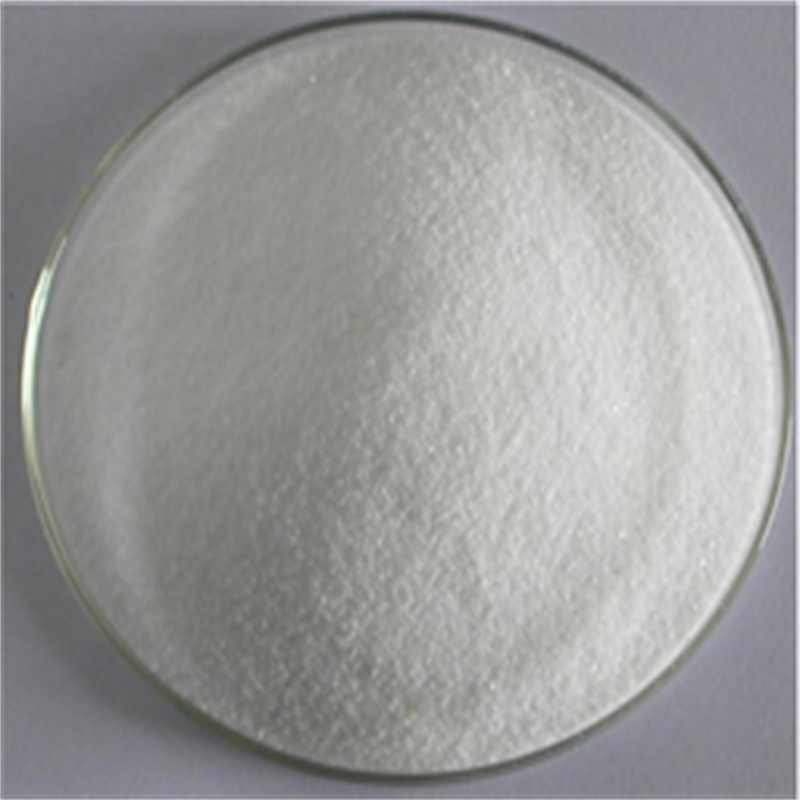-
Categories
-
Pharmaceutical Intermediates
-
Active Pharmaceutical Ingredients
-
Food Additives
- Industrial Coatings
- Agrochemicals
- Dyes and Pigments
- Surfactant
- Flavors and Fragrances
- Chemical Reagents
- Catalyst and Auxiliary
- Natural Products
- Inorganic Chemistry
-
Organic Chemistry
-
Biochemical Engineering
- Analytical Chemistry
-
Cosmetic Ingredient
- Water Treatment Chemical
-
Pharmaceutical Intermediates
Promotion
ECHEMI Mall
Wholesale
Weekly Price
Exhibition
News
-
Trade Service
1Patient informationcases 1: patient, female, 23 years old, body mass 74kg, height 163 cm, because of "pregnancy 38 weeks, scarred uterus" admitted to the hospital, in the whole mahjong "under the uterine section of caesarean section." The patient is in good health and denies having a history of drug allergiesAnesthetic induction: Ondansjong 5mg, Propofol 150mg, Roco Bromo 35mgPlace the 3rd LMA double-pipe larynx cover through the mouthInoperative medication: heptafluoroetherine 1.5% to 2.0%, the fetus after delivery to give midazolam 2 mg, intermittent lysic fentanyl 0.15 mg, after surgery to give fluorofenester 50 mg, surgery duration of 1hthe patient's surgical incision is a cross cut, before closing the abdomen, the surgeon first body table positioning incision level abdominal straight muscle outer edge to Petit triangle distance, from the incision horizontal separation of the shallow fascia, exposing the outer edge of the abdominal straight muscle, in the outer edge position of the outer inner abs to point 21G epidural outside the tip of the catheter to the same side spine The oblique 30-degree placement of the catheter, so that the catheter travels between the abdominal oblique muscle and the abdominal transverse muscle, the depth of the placement catheter and the body table positioning length is the same, and the final tip reaches near the Petit triangle, as shown in Figure 1, the anatomical transvesus abdominis plane, TAP) and the placement of the two-sided catheter takes 3minThe catheter is worn through the end edge of the side incision and is fixed to the surface of the abdominal wallPlace the TAP blocking catheterduring the cross-cuttingFigure 1
After a single injection of 0.25% of the loponecain 20mL on each side after the abdominal closure is closed for postoperative analgesiaIntravenous self-controlled analgesic pumps are not given, and fluprolobin 50mg is given in a single time, or 5mg of oral oxycodone, if analgesics need to be remediedAfter surgery, 0.25% of the ropones in the catheter are added every 8 to 10h, for a total of 3 additional timesThe resting visual simulation scoring method (VAS) and comfort scoring method (BCS) were evaluated in patients after surgery 2, 4, 6, 8, 12, and 24h respectively, and the results are shown in Table 1Patients still complain of mild contractions, but tolerable, and the overall analgesic effect is satisfactoryNo intravenous lysic, or oral analgesictable 1 patients VAS and BCS scoresno adverse reactions such as headache, nausea and vomiting after surgery, catheter retention 48h after removal, wound healing is goodUnder ultrasound by the catheter injection of local anaesthetic drugs, as shown in Figure 2, the visible abdominal cross fascia plane has a shuttle-type liquid dark area, indicating that the catheter is in the correct positionFigure 2 Under ultrasonic guidance push 0.25% of Roptuna 20 mLSC: subcutaneous tissue; EO: extraabdominal oblique muscle; IO: intraabdominal oblique muscle; TA: abscases 2: patient, female, 30 years old, body mass 69kg, height 159 cm, due to "pregnancy 37 weeks, scarred uterus" admitted to the hospital, in the whole line of the "under the womb section of caesarean section." The patient is in good health and denies having a history of drug allergiesInduced medication: Ondansjun 5mg, Propofol 150mg, Rocum Bromino 35mgPlace the 3rd LMA double-pipe larynx cover through the mouthIntraoperative medication: heptafluoroetherine 1.5% to 2.0%, the fetus after delivery to give midazolam 2 mg, intermittently given fentanyl 0.15 mg, after the end of the fluorofenester 50mg, surgery duration of 1hthe patient's surgical incision for the vertical incision, before closing the abdomen, the same by the surgeon in the umbilical cord and the shame bone joint middle point first body table positioning the outer edge of the abdominal straight muscle to Petit triangle distance, from the incision level separation of the shallow fascia, exposing the outer edge of the abdominal straight muscle, in the outer edge of the abdominal straight muscle position will be The 21G epidural outer catheter tip points to the same side ridge oblique 30 degrees placed into the catheter, so that the catheter travels between the abdominal oblique muscle and the abdominal transverse muscle, the depth of the placement catheter is the same as the length of the body table positioning, and finally the tip reaches near the Petit triangle, dissecting TAP and placing the two-sided catheter takes 3minThe catheters are worn through the incision and are fixed to the surface of the lateral abdominal wallThe position of the catheter is shown in Figure 3Place the TAP blocking catheterwhen cutting in thefigure 3
After a single injection of 0.25% of the loponecain 20mL on each side after the abdominal closure is closed for postoperative analgesia Intravenous self-controlled analgesic pumps are not given, and fluprolobin 50mg is given in a single time, or 5mg of oral oxycodone, if analgesics need to be remedied After surgery, every 8 to 10h through the catheter by 0.25% of the ropone 20mL, a total of 3 additional times The patients were evaluated for VAS and BCS after surgery 2, 4, 6, 8, 12, and 24h respectively, and the results were shown in Table 2 Patients are satisfied with analgesia after surgery, no oral or intravenous analgesics, no other adverse reactions table 2 patients VAS and BCS scores 2 Discussion regional blocking techniques can be good to relieve postoperative pain after caesarean section TAP blocking is a relatively new regional nerve blocking technique There is already much clinical evidence of the efficacy of TAP blocking, but the literature on TAP blocking in obstetric patients is still limited The entry that implements tap blocking includes classic entrance, side entry, rib-down entry, and rear entry For the back-road TAP block, Carney and other volunteers on the back road TAP found that the injection of Lidoca intherein can produce 4 to 6h effective sensory nerve block in the T7-L1 range; Tran and other studies show that the back block can affect the T10-L1 nerve root For the lower section of the uterus caesarean section under the rib intherion and the back road blockcan can play a good analgesic effect The effect of the latter block and the rib block on the analgesic after the cesarean section section of the lower abdomen less research on clinical , Chen Youyong and other studies believe that the effect of TAP blocking analgesia in the back road is significantly better than tap blocking in the lower rib path the way to place analgesic catheters in direct-looking, direct-looking, the way to establish a tunnel between the abdominal transverse muscle and the intra-abdominal oblique muscle through blunt separation, and the tip reaches the Petit triangle to produce a blocking effect at the blocking site On the other hand, there have been reports that TAP blockan analgesic catheters can be placed by surgeons during surgery Therefore, this case tried the feasibility of postoperative analgesia method, reported 2 routine laryngeal mask full hemp cesarean cesarean and placed TAP catheters directly under the eyes for postoperative analgesia, after surgery pain relief is good Of the 2 maternal cases, 1 was a vertical incision and one was a cross cut Both cases were placed under direct looking at the fascia between the abdominal transverse muscle and the intraabdominal oblique muscle The epidural tube is injected with 0.25% ropixcain 20mL at intervals every 8 to 10h, ensuring that the maximum allowable level of ropcocan is not exceeded In adult abdominal surgery, continuous abdominal analgesic catheters have been widely used as an alternative analgesic with evidence of intravertebral punctures Tap blocking under ultrasonic guidance increases safety and effectiveness, perfects postoperative multi-mode analgesia, but because of the relative technical requirements and equipment requirements of ultrasound guidance, and the operation time is longer, and there is a risk of nerve damage at the puncture site, limiting the widespread use of TAP analgesics after caesarean section Under the direct look of the surgeon, the epidural catheter is placed by anatomical separation tap, simplifying the operation, and the total time of placing the analgesic catheter in a single time is about 5min, greatly improving the efficiency of the operation Although there is a local anaesthetic after anatomical separation of TAP, the possibility of local anaesthetic leakage from the anatomical plane, and a separate TAP block can not replace the patient's self-controlled venous analgesic seroic effect, compound vein analgesic drugs can effectively reduce the amount of intravenous analgesics, the case analgesic method is at the end of surgery to give a single fluorobilentest 50 mg, fluorofenester half-life of 5.8h, 24h At the same time, when the patient needs analgesia to remedy the additional fluorobilfen ester 50 mg, can better relieve the patient's uterine incision of the contraction pain and internal laritotic discomfort Through observation, it was found that the effect of postoperative analgesia was still satisfactory More research is needed on this problem Due to the lack of optimal capacity and dose of TAP blocking for mothers, we use intermittent administration to ensure that the maximum allowable dose of loponecain is not exceeded at present, despite the many clinical scenarios that can be applied, due to the limitations of ultrasound use in various medical units, most of them are placed only by anesthesiologists, and TAP blockers for postoperative analgesia are still not widely developed In short, placing the TAP catheter directly under direct look is an effective analgesic method of the full section of the larynx







